

Home Institution: University of Texas Rio Grande Valley
REU Mentor: Tim Lodge and David Blank
Triboelectric, piezoelectric, and photocatalytic materials
...

Home Institution: University of Texas Rio Grande Valley
REU Mentor: Chris Ellison
Preparation, characterization, application of internally structured nanofibers
...
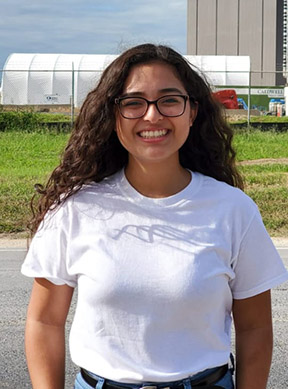
Home Institution: University of Texas Rio Grande Valley
REU Mentor: Tim Lodge
Better materials for next generation lithium batteries
...
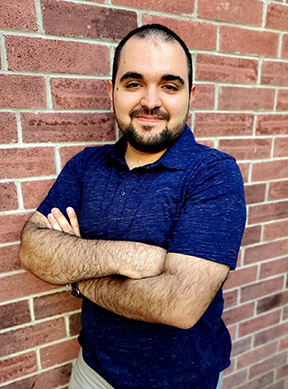
Home Institution: University of Texas Rio Grande Valley
REU Mentor: Tim Lodge
Better materials for next generation lithium batteries
...
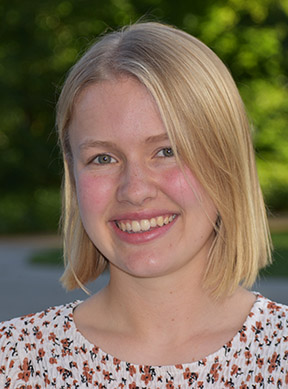
Home Institution: Grinnell College
REU Mentor: Turan Birol
Tight Binding Model for GdCuAs2
This summer, I used supercomputing resources at the University of Minnesota’s MSI to study the transition from the compound GdCuAs2 to GdCuP2, where arsenic is replaced
with phosphorus in the crustal structure. To achieve this, I ran calculations using DFT (density functional theory). DFT is a method of calculating certain properties of
crystalline solids, such as their crystal structures and band structures. It draws heavily from quantum mechanics and solid state physics theory, and requires the use
of large amounts of computing power to solve complicated sets of equations. The information from DFT calculations was used to study the electronic band structure of GdCuAs2
and to assess the instabilities in the GdCuAs2 and GdCuP2 structures. We and interested in this transition because both compounds have square nets of atoms in their structures,
which is an indicator of potential topological features in the material. The topology is suggested in the band crossings that appear in band structures of some square-net
materials. We observe band crossings in our GdCuAs2 band structure results, but need to do additional work before determining which ones are indicative of topologically
protected features. Additionally, we found that GdCuAs2 is more stable than GdCuP2 due to the presence of arsenic (rather than phosphorus) in the square net, and that the
larger GdCuAs2 crystal unit cell size has a negligible effect on structural instabilities.
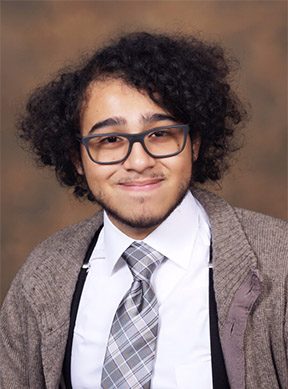
Home Institution: University of Texas Rio Grande Valley
REU Mentor: Tim Lodge and David Blank
Triboelectric, piezoelectric, and photocatalytic materials
...
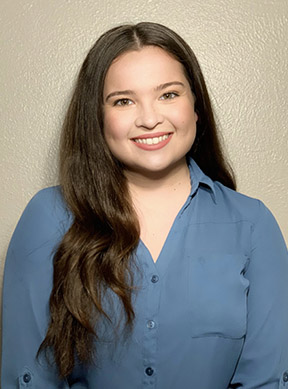
Home Institution: University of Texas Rio Grande Valley
REU Mentor: Chris Ellison
Preparation, characterization, application of internally structured nanofibers
...

Home Institution: University of Texas Rio Grande Valley
REU Mentor: Chris Leighton
Preparation, characterization, and applications of magnetic nanoparticles
...
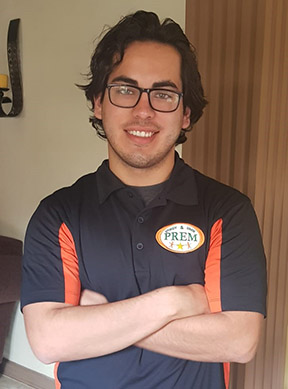
Home Institution: University of Texas Rio Grande Valley
REU Mentor: Chris Leighton
Preparation, characterization, and applications of magnetic nanoparticles
...

School: Spring Lake Park High School
Mentor: Kyle Bantz
Title: Mystery Solved: The Case of the Counterfeit Money
Laboratory experiments provide an opportunity for students to interact with scientific content at a higher level of thinking. Sometimes these laboratory experiments can be isolated from students’ daily lives and will only focus on one major unit from the class, which does not reflect real world laboratory situations. Students are more engaged with laboratory experiments that not only ask them to use cross-unit knowledge but also ask them to solve a tangible problem. Herein, we present a counterfeit ink experiment, which allows students to apply their knowledge of spectroscopy, separations, and acid-base chemistry to solve a counterfeit money crime. The structure of this lab is flexible and allows it to be implemented in a number of chemistry courses; Analytical Chemistry, AP Chemistry and High School General Chemistry and will be modified based on student and teacher feedback. Incorporation of a mystery based critical thinking lab will increase student engagement and understanding of the topics covered in the lab.

School: Shakopee High School
Mentor: Luis Corcoran
Title: An Investigation of Oil Dispersants & Surfactant Chemistry
Oil spills are some of the most high profile of all environmental disasters-and with good reason. They release millions of gallons of toxic crude oil into the environment, causing long-lasting damage to both the environment and economy. Part of the reason is that once released, the clean-up process is exceedingly difficult-but WHY? This lens can be used to introduce high school chemistry students to a range of topics including molecular structure, solubility and mixture separation. The laboratory investigation presented here prompts students to apply the central chemistry concepts described above to a real-world issue: the use of surfactants (dispersants) on oil spills. Students design their own oil dispersant by analyzing marine toxicity and the effectiveness of several potential surfactants. Oil-eating bacteria are then introduced to the dispersed mixtures to determine whether or not dispersion of oil leads to improved bioremediation. Analysis is done without the need for specialized equipment-only a digital camera, making this investigation notonly relevant but also practical and inexpensive.
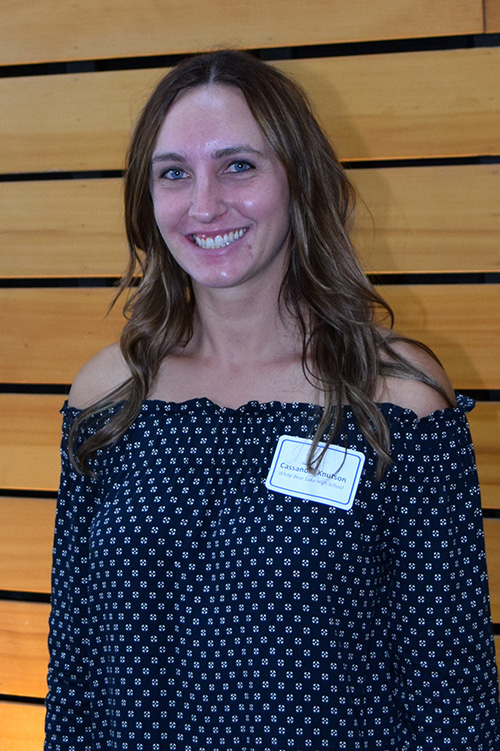
School: White Bear Lake High School
Mentor: Jane Wissinger
Title: Dyeing to Degrade: A Bioplastics Experiment for the College and High School Classroom
Although students are familiar with the problem of plastics accumulating in our environment, their understanding of solutions rarely extends beyond the need for recycling. Consequently, few students can conceptualize current strategies to address the lifecycle and sustainability issues of today’s plastics. This includes innovations to derive plastics from renewable resources rather than fossil fuels and providing alternatives to recycling in the form of biodegradation. Additionally, high school/college curriculum usually lacks in instruction on the structure and properties of polymers. In contrast, when asked, “where are plastics in your daily life?,” students acknowledge the importance of plastics and recognize the accumulation as a problem to be addressed.We developed an experiment which capitalizes on the societal connection of plastics to engage students in learning basic polymer chemistry, laboratory skills, and green chemistry principles. Three biobased polymers are synthesized from combinations of citric acid, glycerol, and tapioca starch. Yellow dye #5 is added to each sample. Each sample is placed in sodium hydroxide and degradation is followed by release of dye. Students time how long each sample takes to degrade or ultraviolet-visiblespectroscopy/smartphone colorimetry is used to follow the release of dye at timed intervals.

School: Mankato West High School
Mentor: R. Lee Penn
Title: Dye Sensitive Solar Cells
Iron oxide. Rust. What’s there to know?
There are two kinds, iron (II) oxide and iron (III) oxide. Electrochemistry. Thermochemistry. It’s used in thermite. Familiar. However...There are sixteen iron oxides and iron oxyhydroxides. They are produced under various conditions throughout the world and several are used as catalysts and pigments.Hematite (Fe2O3) is the most abundant iron oxide and is noted for its red color in soil and is used to make steel. Magnetite (Fe3O4) is also used to make steel and is magnetic. However, iron oxides can be made by varying the temperature they are made, the pH of solution they’re made in, and the time needed for crystallization.Student learning outcomes will include material synthesis and determining methods for analysis. Students will be instructed of the basic procedures needed to make iron oxides and the iron oxyhydroxide goethite and allowed to formulate their own procedure. Student analysis will include colorimetry using a mobile phone and determination of the percent composition of their iron oxide samples based upon comparisons to standard samples created by students from the University of Minnesota. Further analysis with the University of Minnesota can include XRD (X-ray diffraction) and TEM (transmission electron microscopy).
UMN MRSEC
435 Amundson Hall, 421 Washington Ave. SE, Minneapolis, MN, 55455
P: 612-626-0713 | F: 612-626-7805
UMN MRSEC
137D Amundson Hall, 421 Washington Ave. SE, Minneapolis, MN, 55455
P: 612-626-0713 | F: 612-626-7805